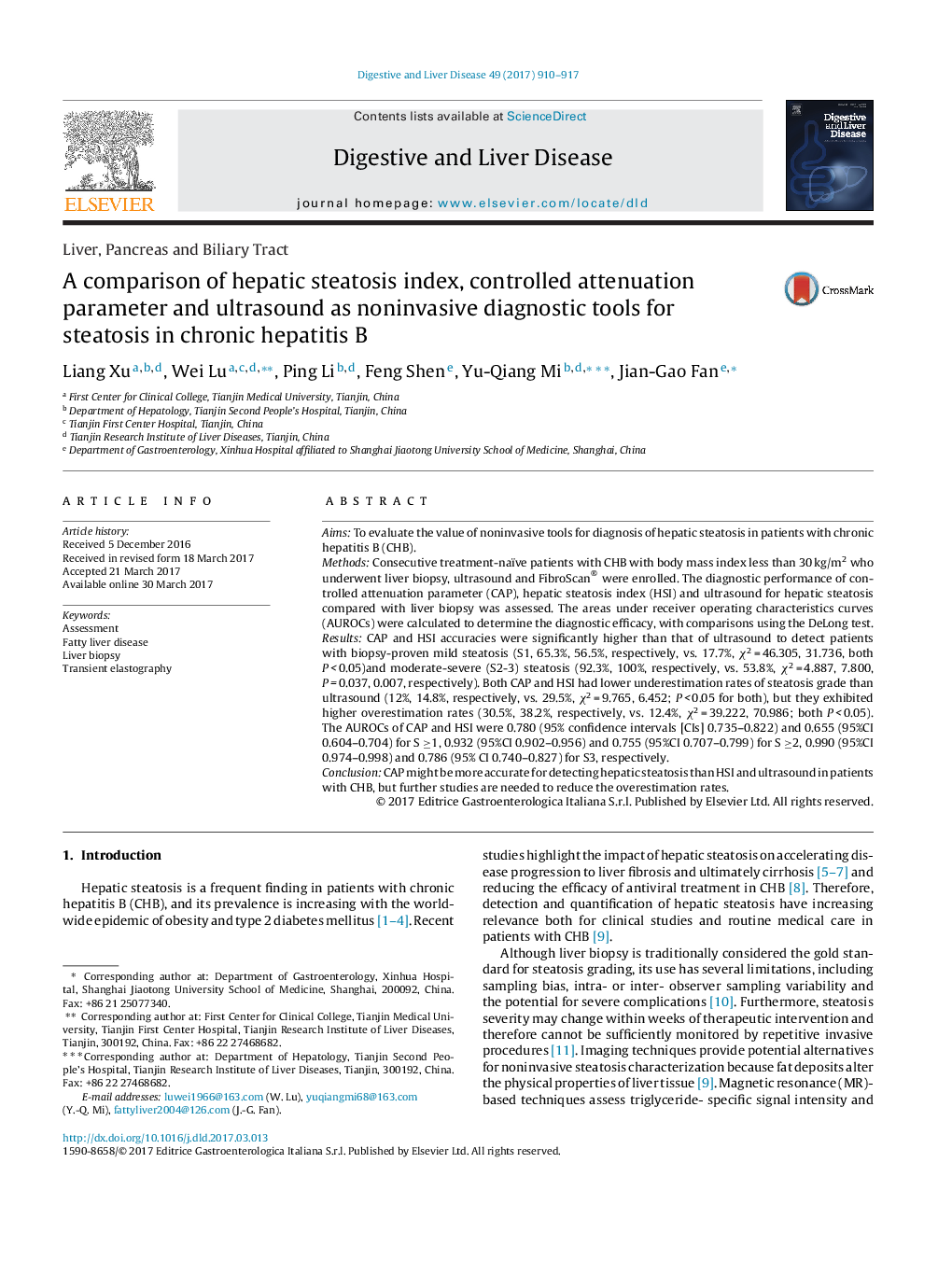| Article ID | Journal | Published Year | Pages | File Type |
|---|---|---|---|---|
| 5655379 | Digestive and Liver Disease | 2017 | 8 Pages |
AimsTo evaluate the value of noninvasive tools for diagnosis of hepatic steatosis in patients with chronic hepatitis B (CHB).MethodsConsecutive treatment-naïve patients with CHB with body mass index less than 30 kg/m2 who underwent liver biopsy, ultrasound and FibroScan® were enrolled. The diagnostic performance of controlled attenuation parameter (CAP), hepatic steatosis index (HSI) and ultrasound for hepatic steatosis compared with liver biopsy was assessed. The areas under receiver operating characteristics curves (AUROCs) were calculated to determine the diagnostic efficacy, with comparisons using the DeLong test.ResultsCAP and HSI accuracies were significantly higher than that of ultrasound to detect patients with biopsy-proven mild steatosis (S1, 65.3%, 56.5%, respectively, vs. 17.7%, Ï2 = 46.305, 31.736, both P < 0.05)and moderate-severe (S2-3) steatosis (92.3%, 100%, respectively, vs. 53.8%, Ï2 = 4.887, 7.800, P = 0.037, 0.007, respectively). Both CAP and HSI had lower underestimation rates of steatosis grade than ultrasound (12%, 14.8%, respectively, vs. 29.5%, Ï2 = 9.765, 6.452; P < 0.05 for both), but they exhibited higher overestimation rates (30.5%, 38.2%, respectively, vs. 12.4%, Ï2 = 39.222, 70.986; both P < 0.05). The AUROCs of CAP and HSI were 0.780 (95% confidence intervals [CIs] 0.735-0.822) and 0.655 (95%CI 0.604-0.704) for S â¥1, 0.932 (95%CI 0.902-0.956) and 0.755 (95%CI 0.707-0.799) for S â¥2, 0.990 (95%CI 0.974-0.998) and 0.786 (95% CI 0.740-0.827) for S3, respectively.ConclusionCAP might be more accurate for detecting hepatic steatosis than HSI and ultrasound in patients with CHB, but further studies are needed to reduce the overestimation rates.
